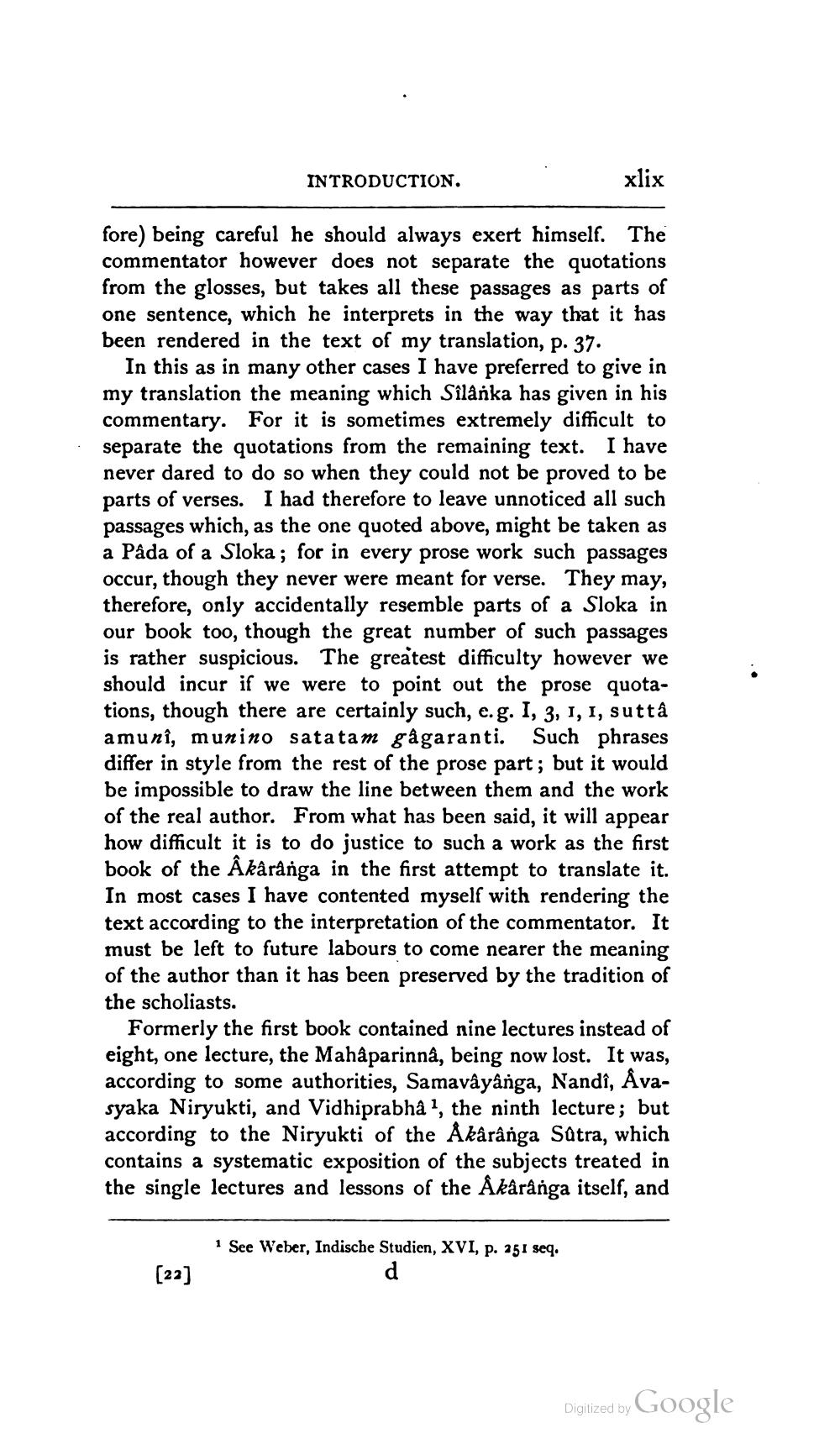________________
INTRODUCTION.
xlix
fore) being careful he should always exert himself. The commentator however does not separate the quotations from the glosses, but takes all these passages as parts of one sentence, which he interprets in the way that it has been rendered in the text of my translation, p. 37.
In this as in many other cases I have preferred to give in my translation the meaning which Sîlanka has given in his commentary. For it is sometimes extremely difficult to separate the quotations from the remaining text. I have never dared to do so when they could not be proved to be parts of verses. I had therefore to leave unnoticed all such passages which, as the one quoted above, might be taken as a Pâda of a Sloka; for in every prose work such passages occur, though they never were meant for verse. They may, therefore, only accidentally resemble parts of a Sloka in our book too, though the great number of such passages is rather suspicious. The greatest difficulty however we should incur if we were to point out the prose quotations, though there are certainly such, e.g. I, 3, 1, 1, sutta amuni, munino satatam gagaranti. Such phrases differ in style from the rest of the prose part; but it would be impossible to draw the line between them and the work of the real author. From what has been said, it will appear how difficult it is to do justice to such a work as the first book of the Akârânga in the first attempt to translate it. In most cases I have contented myself with rendering the text according to the interpretation of the commentator. It must be left to future labours to come nearer the meaning of the author than it has been preserved by the tradition of the scholiasts.
Formerly the first book contained nine lectures instead of eight, one lecture, the Mahaparinnå, being now lost. It was, according to some authorities, Samavâyânga, Nandi, Åvasyaka Niryukti, and Vidhiprabhà 1, the ninth lecture; but according to the Niryukti of the Akârânga Sætra, which contains a systematic exposition of the subjects treated in the single lectures and lessons of the Akârånga itself, and
1 See Weber, Indische Studien, XVI, p. 251 seq.
[22]
Digitized by Google




